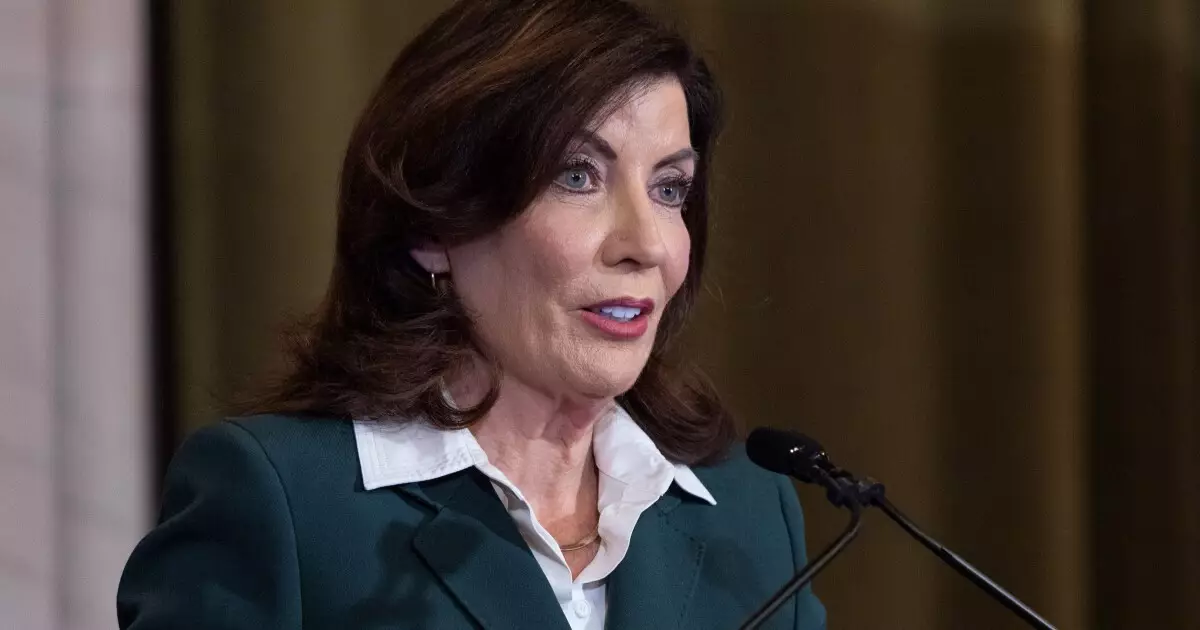The controversial initiative of congestion pricing remains at a critical crossroads in New York City, especially in light of recent electoral outcomes that may interfere with its future. At the forefront of discussions are notable figures such as New York City Comptroller Brad Lander, who has voiced concerns about the implications of Donald Trump’s presidency on the congestion pricing plan. With Trump reiterating his disapproval of congestion pricing even before assuming office, the potential for significant financial investments—estimated at around $15 billion—hangs precariously in the balance.
Autumn 2023 marked a pivotal moment in New York politics, particularly with the repercussions stemming from the recent presidential campaign. As expressed by Lander, the consequences of Trump returning to the White House could be dire for the Metropolitan Transportation Authority (MTA) and the city’s transit system at large. Not only does congestion pricing aim to alleviate traffic woes in Manhattan, but it also represents a crucial financial lifeline for addressing the substantial deficit in the MTA’s capital expenditures.
Trump’s vehement opposition to the tolling system promotes uncertainty among lawmakers. Even when the city had begun taking concrete steps towards implementing congestion pricing earlier this year, Governor Kathy Hochul’s abrupt suspension of the initiative raised eyebrows. The political rationale behind her decision was speculated to relate to the electoral climate, where backlash from suburban commuters opposing tolls could complicate Democratic strategies.
Following the elections, there were whispers of reviving the congestion pricing proposal, albeit with significant modifications aimed at winning over diverse stakeholders. Hochul has taken a pragmatic stance, considering reducing toll amounts for passenger vehicles—a move that could potentially placate critics while still aiming to sustain MTA revenues. The intriguing aspect of this situation is the balancing act that Hochul must perform: the need to satisfy both fiscal demands and the political pressures from constituents who are wary of additional costs on their commutes.
Although the proposed reduction from $15 to $9 may sound enticing, it inadvertently raises the stakes for other vehicle categories such as trucks and taxis. This trade-off raises complex questions about who ultimately pays for the city’s transit needs. Balancing a financial model that mandates raising approximately $1 billion annually while simultaneously catering to lower-income drivers is no simple feat.
While negotiations continue at the local level, significant hurdles remain on the federal front. The effective implementation of congestion pricing hinges on necessary approvals from the Federal Highway Administration, which under current political leadership could be considerably obstructed. Hochul previously placed the plan on pause by refraining from endorsing essential documentation; a similar maneuver by Trump and his administration could completely dismantle the groundwork laid by local officials.
In the event that congestion pricing stalls further or evolves into a half-baked plan due to political maneuvering, the ramifications are hefty. The MTA is already grappling with a $16 billion shortfall in its funding plans, which has resulted in the postponement of several critical infrastructure projects aimed at improving transit facilities and services for New Yorkers. The ripple effects resonate far beyond immediate fiscal implications; they could degrade the city’s already challenged transit infrastructure, affecting millions of riders who rely on these services.
Coming into the new era of governance, the MTA’s leadership—under Chair Janno Lieber—emphasizes the crucial need for stable revenue sources to support ambitious capital programs. The $69 billion budget earmarked for the 2025-2029 capital plan depends on new investment strategies to emerge swiftly. Failing to act on congestion pricing can result in further deterioration of a public transportation system in dire need of overhaul and expansion.
New York City now finds itself at a historic juncture. With momentum toward smart urban policies such as congestion pricing faltering under political strife, only time will reveal whether local leaders can navigate these choppy waters to deliver a sustainable future for the city’s transit system. Ultimately, the stakes remain high, as delays could threaten not just funding, but the transportation framework that countless New Yorkers depend on each day.


Leave a Reply